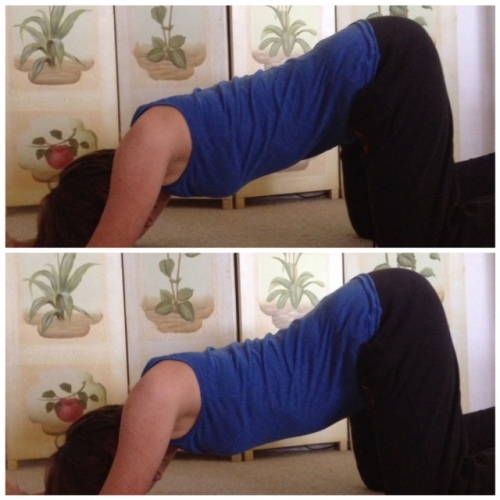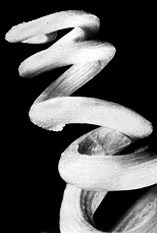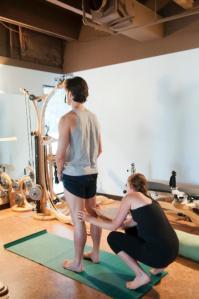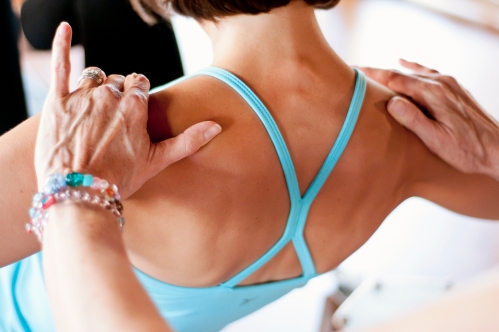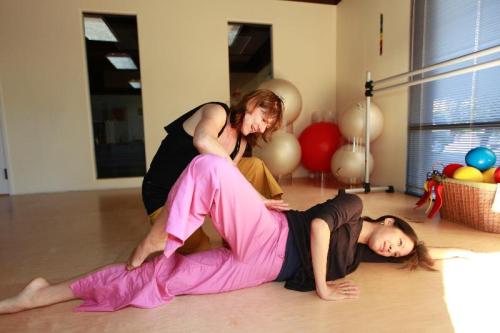Lisa’s True Confession
Part 1
My name is Lisa Perry and I am a “leaner”. I have been a leaner as long as I can remember. Though I have been taught many disciplines and techniques that require me to “stand up straight”, I will lean every chance I get. I have become so strategic in my leaning that I can actually lean without having something to lean against. My leaning seems harmless at the moment but what is the true cost? If you look close enough, most of my shirts have a small hole where my pelvis meets the counter tops. So I spend more money on shirts. But seriously, other than damaging my shirts I am also silently damaging my spine, feet, pelvis, hips, knees, shoulders, ribs, hands, jaw, and much more. I’ll start with the lower half of my body.
 The Lean
The Lean
My pelvis has a lot to do with my center of gravity, so by pressing it forward towards the counter or over my toes, I am putting constant pressure on the front of my hip joint. Continuously sending my weight forward requires my hip flexors (psoas specifically) and quadriceps to work nonstop to keep me from falling forward, slowly wearing away the cartilage and fraying the tendons and ligaments in both the hip and knee joints.
My feet are also victims of my forward placed pelvis. My toes are constantly gripping the ground; working like little kick-stands to keep my body weight from continuing too far forward. Helping my 10 small toes are my calves trying to pull my weight back. The fascia in the arches of my feet suffers as it is caught in the tug of war between my toes gripping and my calves clenching, causing plantar fasciitis.
With my pelvis placed forward, my hamstrings are passively tightening helping my over-tensed psoas to tuck my pelvis under (posterior). My tucked pelvis passively shortens my pelvic floor, gluteals, and lower abdominals. These shortened or tight muscles are not short because I over-use them and they are strong, they are short because muscles never allow themselves to go slack. As I shorten the distance between muscle attachments, my muscles reset their resting lengths. Along with my passively tight muscles in my pelvis, I have also over-stretched and weakened my spine extensors in my lower lumbar spine. This means that not only do I not have stability at the tail end of my spine but I also am lacking it in my sacroiliac (SI) joints and lumbar vertabrae. I am now at risk for low spine injury such as bulging or herniated discs and nerve impingements. I can also add all pelvic floor disorders, including organ prolapse and incontinence, to my risk list.
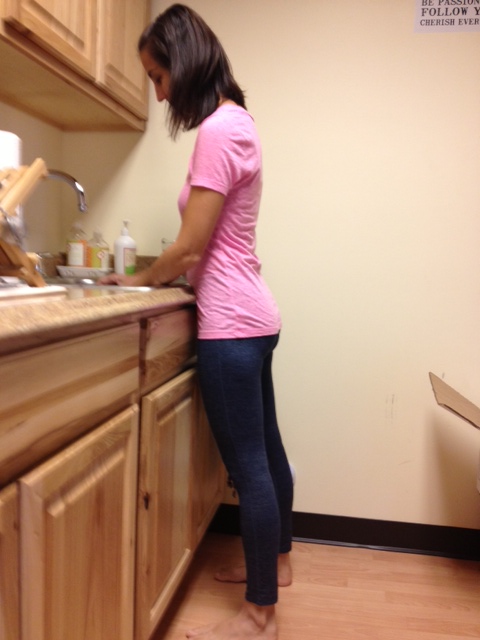
Does my leaning habit mean that I am doomed to suffer from all of these ailments and more? No, but most likely I will acquire some of them. Honestly, I already battle with SI instability, hip pain, and plantar fasciitis. It is this pain that has brought me to the work that I do today. What can I do to break this habit and continue a high quality of life free of pain?
I can be aware. The more I can catch myself leaning, the more I can work to correct my alignment. I practice my stance as many times as I can remember a day. Standing in line, teaching, washing my hands, cooking, washing dishes, carrying my daughter, etc… are all moments where I check in with my alignment. I might only hold onto my corrected alignment for a few seconds, but the more times I spend a few seconds in a better alignment, the more my muscles remember how to hold me there and they continue to gain balanced strength.
What about you? Are you a leaner? Leave us a comment with your thoughts!
